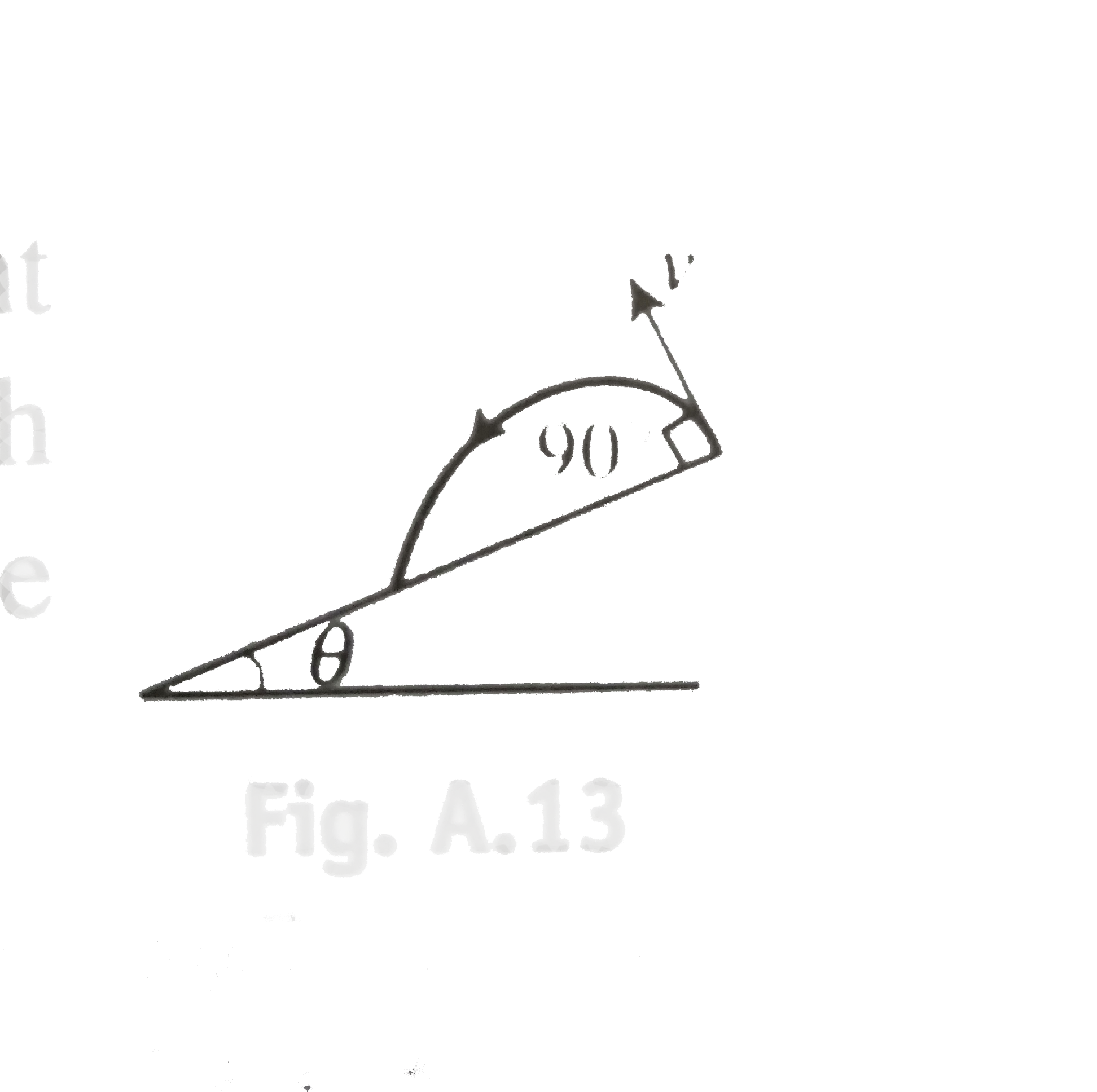Two projectiles are fired at different angles with the same magnitude of velocity such that they have the same range. At what angles they might have been projected ?
35∘and75∘
25∘and65∘
10∘and59∘
None of these
The correct Answer is:B
To solve the problem of finding the angles at which two projectiles can be fired to achieve the same range with the same initial velocity, we can follow these steps:
1. Understand the Range Formula:
The range R of a projectile is given by the formula:
R=u2sin(2θ)g
where u is the initial velocity, g is the acceleration due to gravity, and θ is the angle of projection.
2. Set Up the Problem:
We know that both projectiles have the same initial velocity u and achieve the same range R. Therefore, we can equate the range formulas for both angles:
R1=R2
This implies:
u2sin(2θ1)g=u2sin(2θ2)g
Since u and g are constants and non-zero, we can simplify this to:
sin(2θ1)=sin(2θ2)
3. Use the Property of Sine:
The sine function has a property where:
sin(180∘−x)=sin(x)
This means that if sin(2θ1)=sin(2θ2), then:
2θ2=180∘−2θ1or2θ2=2θ1
4. Find the Relationship Between Angles:
From the first equation, we can derive:
2θ2=180∘−2θ1
Dividing by 2 gives:
θ2=90∘−θ1
This shows that the two angles θ1 and θ2 are complementary angles.
5. Conclusion:
Therefore, the angles at which the projectiles might have been projected are complementary, meaning:
θ1+θ2=90∘
6. Check the Options:
Given options are:
- Option A: 35∘+75∘=110∘ (Not valid)
- Option B: 25∘+65∘=90∘ (Valid)
- Option C: 10∘+59∘=69∘ (Not valid)
Thus, the correct answer is Option B: 25∘ and 65∘.
The range R of a projectile is given by the formula:
R=u2sin(2θ)g
where u is the initial velocity, g is the acceleration due to gravity, and θ is the angle of projection.
We know that both projectiles have the same initial velocity u and achieve the same range R. Therefore, we can equate the range formulas for both angles:
R1=R2
This implies:
u2sin(2θ1)g=u2sin(2θ2)g
Since u and g are constants and non-zero, we can simplify this to:
sin(2θ1)=sin(2θ2)
The sine function has a property where:
sin(180∘−x)=sin(x)
This means that if sin(2θ1)=sin(2θ2), then:
2θ2=180∘−2θ1or2θ2=2θ1
From the first equation, we can derive:
2θ2=180∘−2θ1
Dividing by 2 gives:
θ2=90∘−θ1
This shows that the two angles θ1 and θ2 are complementary angles.
Therefore, the angles at which the projectiles might have been projected are complementary, meaning:
θ1+θ2=90∘
Given options are:
- Option A: 35∘+75∘=110∘ (Not valid)
- Option B: 25∘+65∘=90∘ (Valid)
- Option C: 10∘+59∘=69∘ (Not valid)
Topper's Solved these Questions
- MOTION IN A STRAIGHT LINE & PLANE BOOK - VMC MODULES ENGLISHCHAPTER - MOTION IN A STRAIGHT LINE & PLANE EXERCISE - ENABLE
50 Videos
- MOTION IN A STRAIGHT LINE & PLANE BOOK - VMC MODULES ENGLISHCHAPTER - MOTION IN A STRAIGHT LINE & PLANE EXERCISE - EFFICIENT
50 Videos
- MOCK TEST 9BOOK - VMC MODULES ENGLISHCHAPTER - MOCK TEST 9EXERCISE - PHYSICS (SECTION 2)
5 Videos
- Motion in Straight Line BOOK - VMC MODULES ENGLISHCHAPTER - Motion in Straight Line EXERCISE - IN-CHAPTER EXERCISE-J
10 Videos
Similar Questions
Write two different vectors having same magnitude.
View SolutionTwo particles are projected from the same point with the same speed at different angles θ1 & θ2 to the horizontal. They have the same range. Their times of flight are t1 & t2 respectily
View SolutionTwo particles are projected from the same point with the same speed at different angles θ1 & θ2 to the horizontal. They have the same range. Their times of flight are t1 & t2 respectfully
View SolutionA projectile is fired at an angle of 30° to the horizontal with the speed v. If another projectile is projected with the same speed, then at what angle with the horizontal it must be projected so as to have the same range ?
View SolutionA projectile is fired with a velocity v at right angle to the slope inclined at an angle θ with the horizontal. The range of the projectile along the inclined plane is

View SolutionA projectile is projected with speed u at an angle θ with the horizontal . The average velocity of the projectile between the instants it crosses the same level is
View SolutionA projectile is fired at an angle of 45∘ with the horizontal. Elevation angle of the projection at its highest point as seen from the point of projection is
View SolutionTwo particles are projected with same initial velocity one makes angle θ with horizontal while other makes an angle θ with vertical. If their common range is R then product of their time of flight is directly proportional to :
View SolutionA projectile fired with initial velocity u at some angle θ has a range R . If the initial velocity be doubled at the same angle of projection, then the range will be
View SolutionThe range of a projectile fired at an angle of 15∘ is 50 m. If it is fired with the same speed at an angle of 45∘ its range will be
View Solution
